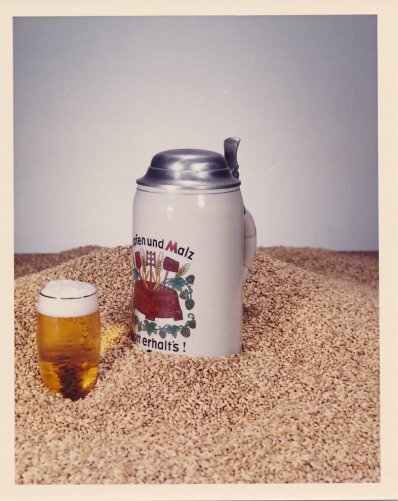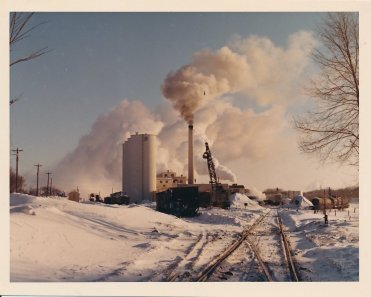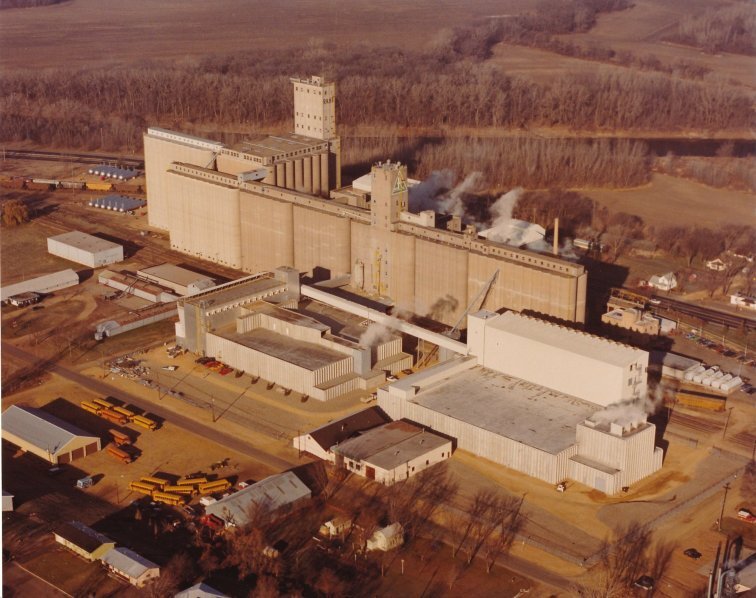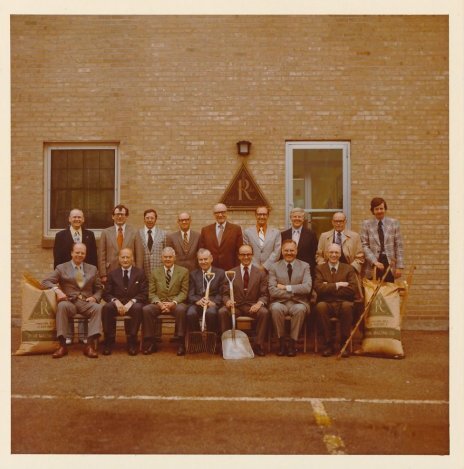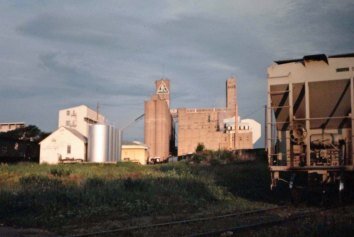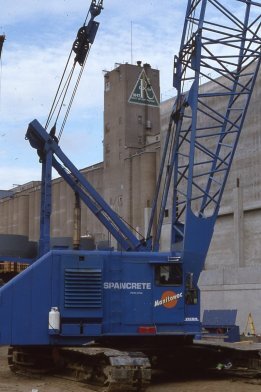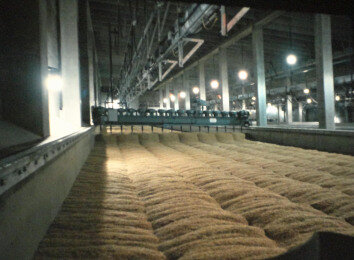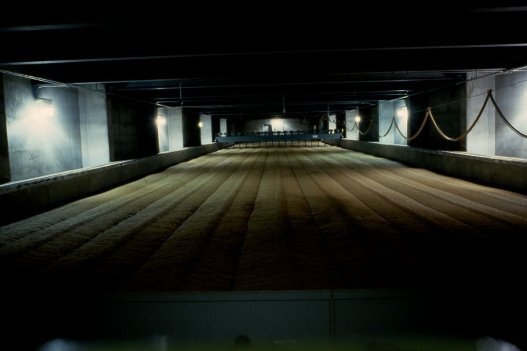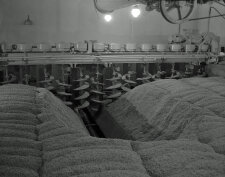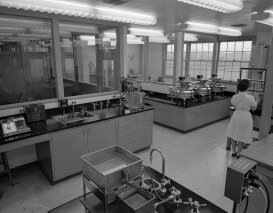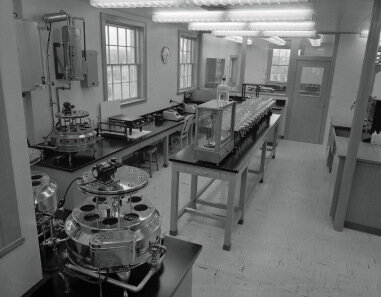Continuing our inventorying of the photographic work of LeRoy Lebens here at SCHS, one of the more prevalent themes of his catalog is local businesses and their development. His photographs capture the construction and activity of many businesses throughout Scott County. However, one business seems to stand out among all the others, both in terms of numbers of photos and physical size, the Rahr malting plant in Shakopee. We thought it would be interesting to share a few of these images with you, along with a little background on this longtime member of the Scott County business community.
The Rahr family began a brewing business under the direction of German immigrant William Rahr in 1847 along the shores of Lake Michigan in Manitowoc, WI. Malted barley grain, necessary to the brewing process, was also produced by the family. It was this second factor that would ultimately prove to be their greatest success. Within a short time, Rahr began selling their excess malt to other breweries throughout the Midwest and eventually this became their primary focus until prohibition swept through the country in 1920. To survive prohibition, Rahr produced malt for use “near beers”, coffee, and dairy products. Fortunately for Rahr, as well as everyone else, prohibition came to an end in 1933 and they could again produce malt for a thirsty population.
Eager to reclaim its former dominance in malting for brewers throughout the Midwest, Rahr looked to expand beyond its Manitowoc location and built a state-of-the-art facility in Shakopee in 1936. They had many reasons for choosing Shakopee for their new facility. First, the malting process requires an abundance of good water, which the aquifer here provides at a constant temperate of 52 degrees, perfect for their needs. Second was proximity to barely, at the time the farmlands around Shakopee were producing some of the best barely in the world. Third was access to shipping facilities, ports along the Minnesota River and railroad service from Union Pacific and Canadian Pacific afford the factory the ability to quickly ship orders anywhere. Fourth was proximity to the Minneapolis Grain Exchange, which was the leading barley market in the nation. Rahr also found an eager workforce and a welcoming city in Shakopee, according to a February 6, 1936 article in the Shakopee Argus-Tribune.
This facility is now the largest single-site malt production facility in the world. Since 1936 the Rahr plant in Shakopee has undergone five more expansions, adding buildings in 1954, 1977, 1981, 1994, and 2016. The facility’s footprint is seven blocks long, two blocks wide, and dominates the skyline with its tall towers which can be seen for miles around. The added capacity has enabled an annual output of 460,000 metric tons of malt, while its 300 storage bins can hold upwards of 8 million bushels of barley. This kind of output makes Rahr an undeniable world leader in their field, providing malt and other supplies to roughly 90 percent of the breweries in the United States, from big names like Anheuser-Busch to the smallest local brewer. Despite having additional facilities in Taft, North Dakota and Alix, Alberta, the Shakopee plant serves as the company’s headquarters where they employ 240 people.
The images we have selected to show here were taken by LeRoy Lebens mostly from the 1960’s through the early 1980’s and show various stages of construction for new buildings, advertising, parts of production, and artistic shots.

